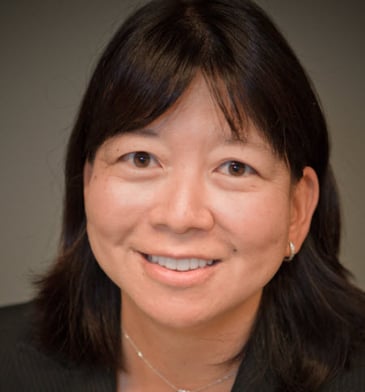Service Spotlight: Civil Engineering with Kathereen Shinkai
 As part of a continuing series on this blog, we’ll take a look at members from each of our services to highlight LPA’s integrated design process and showcase our commitment to sustainable design.
As part of a continuing series on this blog, we’ll take a look at members from each of our services to highlight LPA’s integrated design process and showcase our commitment to sustainable design.
This month, we sat down with civil engineer, Kathereen Shinkai, to discuss the importance of civil engineering in the overall design process and the value it brings to an integrated process.
Q: How long have you worked at LPA?
A: I joined LPA in 2009 to expand the civil engineering services for the company. LPA was looking into integrating their civil engineering service along with all the other disciplines at that time and I thought it was a great opportunity.
Q: How does sustainable civil engineering impact the overall design solution?
A: Water Quality regulations have become much more stringent in the last few years and we as civil engineers need to look at solutions that are cost effective and fit well with the site. Being an integrated firm, we are involved at the beginning of the project and this allows us to design the site thoughtfully.
Q: Why do you think it is valuable to work at an integrated design firm?
A: I think an integrated design firm has a lot of advantages and is essential to a successful project. Since we are integrated, we are involved in the project much earlier in the design process. We never have a site plan that has design constraints that are dictated by one discipline. We always do design charrettes to decide together as a team what the site would entail and how it needs to be designed. We share ideas amongst the disciplines to better design together and come up with innovative design solutions and we continuously learn from each other.
Q: What does a day in the life of Kathereen Shinkai look like?
A: Most days I have meetings scheduled throughout the day. Some meetings are coordination/kick-off meetings for projects, others are design charrettes with other disciplines such as with our landscape architects or plumbing engineers, and some entail going out to the field and meeting with the contractors and clients and discussing issues out on site.
When I am in the office, I get a chance to sit with my team of civil engineers and talk about grading and stormwater design on a specific project. I do quality control/quality assurance checks on all our projects that go out the door and review them with my team.
In regards to some of the other fun things I do, I am involved with the American Society of Civil Engineers (ASCE) and currently serving as President-Elect for the ASCE Los Angeles Section which consist of more than 8,000 members. I am currently helping the University of California, Irvine ASCE Student Chapter organize their Pacific Southwest Regional Conference for next year where they will be competing with local universities in Southern California, Hawaii and Arizona.
 Q: What is the most interesting project you’ve worked on? What did it entail?
Q: What is the most interesting project you’ve worked on? What did it entail?
A: Every project I have worked on at LPA is unique and has interesting components to it. There is never a dull moment, to say the least, and when I see the final design in completion, there is a big sense of accomplishment.
The most rewarding project I have worked on is the Coastline Community College’s Newport Beach Learning Center. One of the main engineering challenges was mitigating stormwater, and our solution is one of the most notable features of the project. We had an opportunity with this site that is rare in Southern California. The underlying soil is very porous making infiltration possible. We designed a system that treats and infiltrates 100 percent of the stormwater and we designed a system using bio-filtration and stormwater filters to clean the stormwater. This project received the Architectural Project of the Year Award from the American Society of Civil Engineers (ASCE) Orange County Branch and the ASCE Region 9 Architectural Engineering Project of the Year Award for the State of California.
Q: How does civil engineering impact the built environment?
A: For any discipline, a built environment has significant impacts and constraints. It is challenging to work around the design constraints that are already in place and we also want to make sure the site is designed seamlessly. However, with good communication with all disciplines, any constraints can always become an opportunity.
